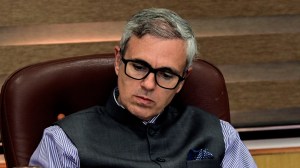Southern states face cut in LS seats
NEW DELHI, Jan 12: Should the Southern states have to pay a price in the form of a cut in Parliamentary seats for their success in implem...

NEW DELHI, Jan 12: Should the Southern states have to pay a price in the form of a cut in Parliamentary seats for their success in implementing population control programmes while the northern parts of the country are rewarded for the unbridled growth in their population?
This in effect will be the dilemma before the government should it decide to lift the freeze on delimitation of Lok Sabha constituencies which expires in 2001.
The freeze, which came into effect in 1976, has created an anomalous situation where some constituencies have electorates running into lakhs while others have an electorate just one-sixth of this in size.
In Delhi alone, while a small constituency like Chandni Chowk has a 4.5 lakh-strong electorate, Outer Delhi constituency has a strength of nearly 30 lakh. This means the value of a vote in Outer Delhi is one-seventh that of a vote in Chandni Chowk.
A similar situation exists in Mumbai where the electorate in a big constituency like Thane or Mumbai North is almost 20 timesmore than the electorate in South Mumbai constituency.
Under the terms of the Constitution, the initial delimitation was carried out by an independent commission based on the 1951 Census. After each decennial census, the number of seats in the Lok Sabha steadily increased.
The last such increase was in 1975, after the 1971 Census when the strength of the Lok Sabha went up to 543. But as far back as the early seventies, some of the Southern states voiced apprehensions that the success of their population control programmes would result in their being unjustly punished with a cutback in their seats to Parliament. The 42nd Amendment passed in 1976 froze further delimitation until after the Census operations of 2001.
With the countdown for the 2001 Census operations having begun, the problem of delimitation is once again rearing its head as the freeze deadline approaches.
While the decision on whether or not to go ahead with delimitation would be taken by both Houses of Parliament, the Election Commissiontoday offered its services as an independent and impartial’ Constitutional body to conduct the exhaustive exercise.
“If the task is entrusted to the Commission then issues like jerrymandering of constituencies can be avoided”, says Chief Election Commissioner M S Gill.
Under the terms of Article 324, the EC is empowered to organise, control and supervise’ the conduct of the polls, a role which could be extended to the delimitation of constituencies.
Another problem with the differing sizes of constituencies is that the ceiling on election spending is the same for all candidates no matter what the size of their constituency. “The limit on expenses being the same for everybody, in practice it could be very unfair if the constituency is an exceptionally big one”, said Gill.
However, a number of social scientists feel that taking up the task of delimitation would exacerbate tensions between the North and the South over the success of population control programmes in the Southern states.
Noteddemographer Ashish Bose strongly feels that the freeze should be extended by a further 20 years at least.
“If the current formula is used, then states like Kerala and Tamil Nadu would in effect be punished for their success in achieving a stabilisation of the population. At the same time a UP or a Bihar will be better off as a result of their rampant population growth”, Bose told The Indian Express
.
For example, if the last Census taken in 1991 were taken into account, Kerala stands to lose at least two seats, Tamil Nadu could lose upto four and Orissa one seat due to the demographic changes in the state.







- 01
- 02
- 03
- 04
- 05
























